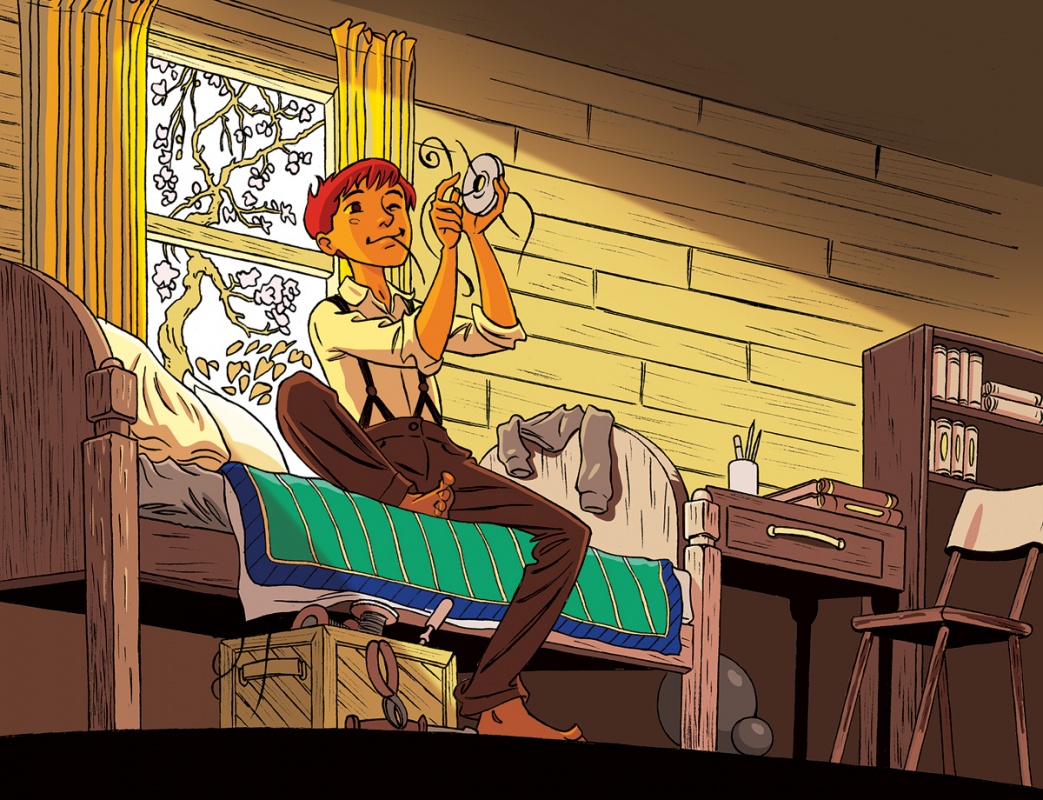Flip a switch at any time and the light comes on. Most of us reach to flip a switch without thinking and simply assume we’ll be illuminated. Except during an occasional outage caused by a passing storm or a failed transformer, our electric cooperatives faithfully provide power around the clock.
Not so in the early days of electricity. By 1890, Texas cities were becoming electrified, primarily to power ice plants, trolley systems and cotton gins. Businesses and homes could connect only if they were close to power lines or generators. What’s more, connected customers typically received power to turn on their lights only at night.
That scenario wouldn’t last, as demand for electricity spread from cities to rural areas—and to some of the U.S.’s youngest residents. An interesting case in point: In 1893, Austin Mayor John McDonald submitted a 14-page report to the city council regarding a nearly completed dam that would provide water and electricity to the growing capital, which then had a population of about 15,000.
“The number of rooms convenient to our proposed electric wire line is a little over 21,000,” he wrote. “It is very reasonable to suppose that if the price of electric light is placed at such figure as to compete with kerosene oil, the dangerous kerosene lamp will be banished, and the better, cleaner and safer electric light substituted therefore, and our insurance rates would then be lessened.”
But that goal of safety would not be achieved if the result was up to one 7-year-old boy named Mose, who devised a way to light up his life in 1895.
Mose lived temporarily with friends in Honey Grove, a railroad town west of Paris in Fannin County. While his father, a doctor, arranged for a new family home in Angleton, Mose stayed with farmer L.M. Hill and his wife, Margaret, in their home on Market Street until school ended four months later.
The oldest of three, Mose rather liked the change of pace at the Hill house, where he was like the couple’s “only child,” as their teenage daughter, Blanche, taught school. She also baked him lemon pies, a favorite treat that he would love his entire life.
Every evening in Honey Grove, the electricity was turned on at 6 p.m. Because the Hills lived in town, they had two lights in their home. It wasn’t long before Mose decided that that he wanted electric lighting in his small upstairs room. So one day he tracked down the local light man to discuss the matter.
“Well, son, that would cost the Hills some money if I did that,” he told the boy. “We also charge by the number of lights in a house. Why you wantin’ to know?”
Mose shrugged. Then, the story goes, he flattered the light man about his superb technical know-how and how complicated it must be to properly install the wiring that a lightbulb required.
“Oh, no, it’s not hard at all,” we almost can imagine the light man exclaiming with pride, pleased by the child’s interest. Then he explained the steps in great detail to the little boy, who no doubt listened with rapt attention. Mose likely flashed a toothy grin and politely thanked the electric light man. Then, as Mose went on his way, the wheels in his head must have spun into high gear: He’d install the light himself!
At this point, the story dims. Exactly where Mose acquired the items he needed to proceed isn’t clear. Perhaps he browsed a hardware or dry goods store on the town square. During the 1890s, Honey Grove boasted a number of possible sources. Somehow, though, he did purchase nickel wire, the same kind that ran along a wall in his bedroom to an upstairs fuse box that connected to the two downstairs lights. He also came up with a socket and a lightbulb.
Back at the Hill house, Mose carefully spliced two wires, which he then taped to his socket. Then he waited for the clock to strike six.
POP!
“Oh, no!” we say. Something went wrong!
“What happened to our lights?” Margaret Hill exclaimed downstairs. “Why didn’t they come on? I’m going to call and find out what happened!”
Picking up the family’s candlestick telephone, Hill asked the operator to connect her with the electric office. “Everyone else in town has lights, ma’am,” came the reply. “You must have a short circuit somewhere. We’ll send a light man right over.”
Mose hurriedly yanked down his wires and hid them under his bed.
“Well, Mrs. Hill,” the light man said, after inspecting the premises, “your fuse burned out, and I’ll have to replace it. I can’t find anything else wrong with the wiring, though. Very strange. I have no clue why it happened. But I’ll have everything fixed and your lights turned on in a jiffy.”
Disappointed but not defeated, Mose went to bed that night and schemed.
The next day, he pulled out the wires from under his bed and set to work. This time, he corrected his mistake and did not tape the two wires together. Instead, he attached them separately to the light socket.
At 6 p.m., the light company turned on the power. At the Hill house on Market Street, the downstairs bulbs flickered on. So did one upstairs in a little boy’s bedroom. For the remainder of his stay with the family, Mose enjoyed electric light every night.
“If the Hills knew it, they never said anything, and I never told it before now,” Mose Allen Smith Sr. later wrote in his memoirs, which he typed up and self-published at the age of 90 in 1978. He lived another nine years before his death, five months shy of his 100th birthday.
I happen to own one copy of those memoirs. I kept it in a drawer until I recently took it out and began to read. In case you haven’t guessed, the author was none other than my very own mischievous and adventuresome Grandfather Smith.
——————–
Sheryl Smith-Rodgers, a member of Pedernales EC, lives in Blanco.


